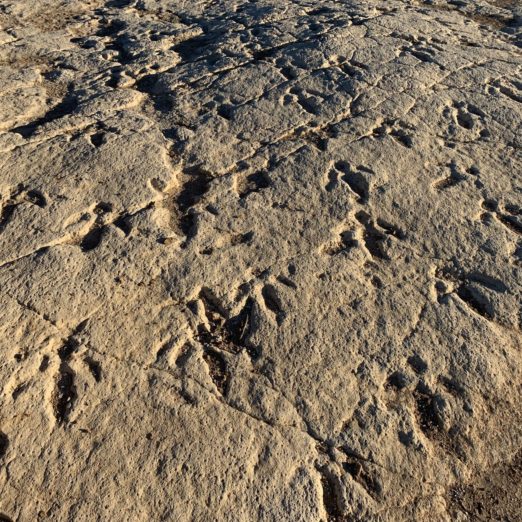Trace fossils
Trace fossils (or ‘ichnofossils’) are records of an organism’s behaviour, left behind when that organism interacted with its environment. Trace fossils can include footprints, burrows, bite or feeding traces, or even coprolites, and they often provide information that cannot be gleaned from study of body fossils (skeletons).
A single organism has the potential to leave behind millions of traces during its lifetime. Study of those traces might tell us how an animal moved, how fast it could run, what it ate, whether it burrowed or climbed, or, rarely, how it interacted with other animals.
Australia’s trace fossil record extends all the way back to the Ediacaran (538.8–635 Ma) when the first complex organisms were scraping up algae off the sea floor. A huge diversity of 130-million-year-old dinosaur footprints are preserved near Broome in Western Australia and slightly younger dinosaur tracks are known from southern Victoria (110 Ma) and central Queensland (90–100 Ma).
More recent trace fossil evidence tells us about the activities of vertebrates in the last five million years of Australia’s history and includes everything from evidence of flamingos in Lake Eyre to how the megafauna walked and even what they ate.
